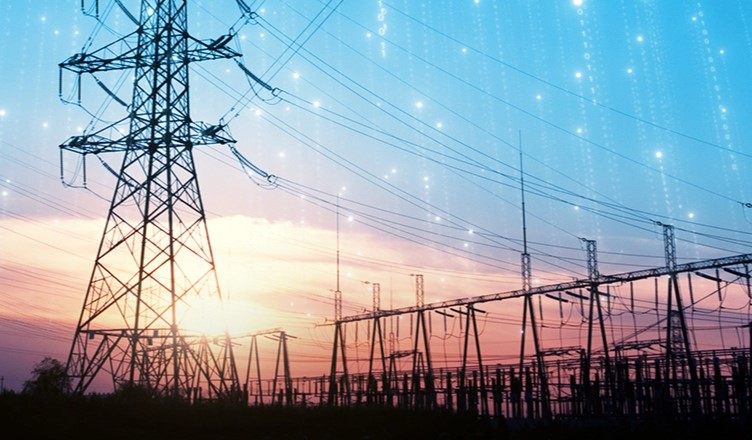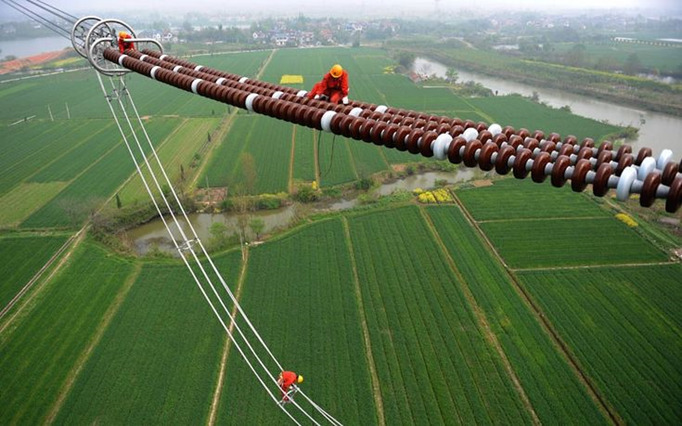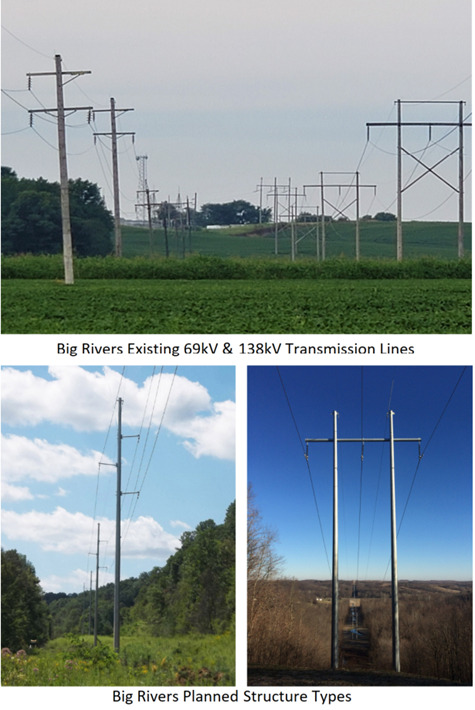
This is the second in my series of articles focused on the Modernization of the Electric Grid. The first article reviewed the components of the electric grid and the drivers of future investment in each component. This article focuses on the transmission network – what it is, its role, and how it is designed, constructed, operated, and regulated. It truly is the backbone of the grid and represents a major and highly visible component of our Nation’s critical infrastructure.
The passage of the recent Bipartisan Infrastructure Law, with $65 billion devoted to the grid, has placed a renewed emphasis on the Nation’s vast transmission network and will pave the way for significant expansion and modernization over the coming decades. There are massive opportunities for industries that are poised to support this effort, as well as exciting, well-paying jobs for new scientists, engineers, construction workers, and high voltage line workers. What an exciting time to be in an industry so critical to our future!
The transmission network is the backbone of our electric grid. It is operated at very high voltages (typically 69 KV to 765 KV), allowing for much more significant power flow through the wires than would be possible at distribution class voltages (typically 5KV to 25KV). These wires, or conductors, are held by long insulator strings, typically supported by large, lattice, or pole-type structures. Most transmission lines are located above ground, running long distances through undeveloped land or along major highway routes. Increasingly, where possible, transmission lines are being buried underground, and with the advent of offshore wind generation, undersea.

There are approximately 160,000 miles of transmission lines across the US. These lines (depicted in blue in the nearby diagram) connect the nation’s larger generating units to bulk substations, where the voltage is changed, or “stepped down,” to the lower distribution class voltages through large power transformers.
Ownership and maintenance of transmission lines is typically the responsibility of the local electric company, municipality, or rural cooperative where the lines exist. The land underneath the lines is either owned outright by the electric company or leased from private owners through long-term “Right of Way (ROW)” agreements. Large utility companies typically need a staff of real estate administrative and legal experts to manage numerous properties and huge numbers of ROW contracts, some dating back over 100 years.
Government regulation of the transmission network includes state utility regulating authorities and siting councils, as well as federal entities such as the Federal Energy Regulatory Commission (FERC) and the North American Electric Reliability Corporation (NERC). NERC is actually an international not-for-profit regulatory authority and was originally formed as the National Electric Reliability Council in 1968 as a result of a large blackout in 1965 in the northeast US and Canada, which affected about 30 million people. Other changes, including the incorporation, were made after the even more significant 2003 Northeast Blackout. NERC is overseen by FERC in the US and other governmental authorities in Canada and Mexico.

The US and Canadian grid is actually made up of four separate synchronous “Interconnections” – the Eastern, Western, Texas ERCOT, and Quebec Interconnections. Within each of these grids, all generators are synchronized and operating to the same alternating current (AC) frequency, or “beat,” using a music analogy. All four grids operate at that same 60-hertz frequency, but since their “beats” are out of step with each other, they cannot easily be connected to transfer power between them. This can only be done through a relatively small number of high voltage direct current (HVDC) transmission lines that have AC/DC converters on either end. This allows for a small amount of power to be transferred between the different interconnections.

Within each interconnection, the amount of generation must constantly be managed to match system load, otherwise known as load balancing. The organizations responsible for maintaining this balance, along with administering the markets for compensating the companies/organizations providing generation to the grid, are known as Regional Transmission Organizations (RTOs) and Independent System Operators (ISOs). The specific differences between RTOs and ISOs, along with the responsibilities of other related entities like Regional Reliability Councils, are beyond the scope of this article.
Transmission construction and maintenance work have several characteristics that, when considered in combination, make for a pretty unique challenge for project design and management. Typical transmission work is on a very large scale. Towers are typically 80 to 120 feet tall. The conductors and supporting equipment are much larger than they appear to be from ground level. The tools and equipment needed for this construction are also very significant. They require specialized workers who not only are familiar with the tremendous mechanical forces involved in raising and tensioning the wires but are also trained for the unique electrical hazards of high voltage work. High voltage line workers typically need at least 5 years of on-the-job training to become fully qualified for their job, making them a hot commodity when large-scale projects arise or when a major storm causes extensive damage to the system.

Transmission projects can also cover large geographical areas, often crossing multiple town boundaries, state boundaries, and even national borders occasionally. Lines are usually run off-road through hard-to-reach areas, often requiring temporary roads to be built for the heavy construction equipment to reach job sites.
Planning and design for transmission work typically involve approvals and permits from multiple local, state, and federal entities, as well as verifying or securing appropriate real estate rights. Stakeholder outreach (media announcements, public hearings, and project “open house” info sessions) is also necessary to address local concerns before construction. Line and structure design must take numerous factors into consideration, including site topography and elevations, clearances over roads and other utility facilities, soil types, wetlands, and future access to each structure. Mechanical considerations include designing for proper ice and wind loading on the wires and proper guying to ensure the structures remain straight and vertical when outside forces impact the line. Electrical considerations include lightning protection, adequate system grounding, and proper selection and sizing of conductors to handle normal and contingent loads. When conductors carry large amounts of current, they heat up and expand, causing the wires to sag. Planning for this is critical to ensure the wires do not get low enough to violate allowed clearances over anything below. During the construction phase, extensive coordination with local town officials, police for public safety and traffic control, transmission operators, and local electric utility companies with responsibility for the substations and protection schemes on either end of the line is all critical to keeping the project on schedule and keeping workers safe.

Our Transmission Design Team has been working on a final design for the relocation of a 1.6-mile stretch of Big Rivers Electric Corporation’s (BREC) 138kV & 69kV high voltage transmission lines near Henderson, KY, relocating and upgrading two existing transmission lines to make way for a new section of Interstate 69. Like many similar projects, there are multiple benefits to be realized by the new construction. Not only will it make way for an important new section of the highway and an associated bridge over the Ohio River, but the new line will also be built to a higher resiliency standard – a very important consideration for lines that help supply upwards of 300,000 customers in the area. Aside from the additional height, the new poles (made of steel instead of wood) can better withstand high winds and the tremendous weight of ice that can build up on the lines. These new poles can also be easier to repair when truly catastrophic conditions occur. Finally, one set of new structures are built in a way that allows a future additional circuit to be added without significant redesign when more capacity is needed. Our team will continue to be involved through all stages of construction for this project. Completion is planned for Fall 2023.
Projects like this, and many that are much larger, have become more numerous lately due to increasing reliability and resiliency expectations, coupled with a greater percentage of the grid that is near or beyond the end of design life. It now appears obvious that there is an additional huge investment in transmission work right on our doorstep, as efforts related to increasing the grid’s capacity for massive integration of renewable energy sources continues to accelerate. In my next article, I will dive deeper into the renewable energy integration challenge and the tremendous opportunities it will bring. As I mentioned at the start of this article, what an exciting time to be in an industry so critical to our future!
To learn more about modernization of the electric grid check out the rest of this blog series below!